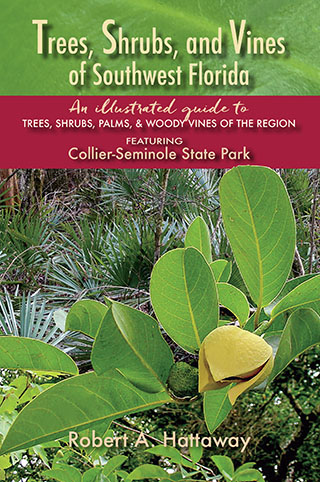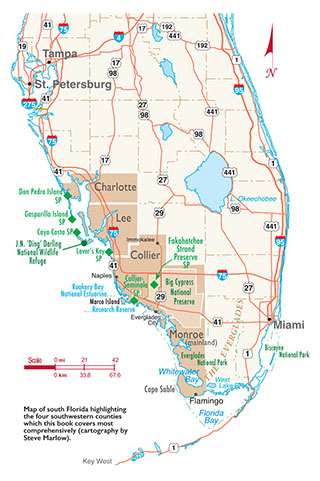Trees, Shrubs, and Vines of Southwest Florida
An illustrated guide to Trees, Shrubs, Palms & Woody Vines of the region
featuring Collier-Seminole State Park
Robert A. Hattaway
The diverse mixture of tropical and temperate plants in the 4-county region covered by this book is unique in the US. Tropical trees such as Gumbo Limbo or Tourist Tree coexist with the more temperate American Persimmon, and a proportionally high percentage of the trees have large showy flowers pollinated by animals rather than wind.
Included in this book are in-depth feature-by-feature treatments of 165 trees, shrubs, palms, and woody vines, plus brief descriptions and/or illustrations of another 125 woody plants — nearly 300 species in all — as well as over 800 drawings and photographs. Special care is taken throughout to point out diagnostic characters of the species and families covered, to mention similar or related taxa, as well as to provide the reader with a basic framework of botanical knowledge.
In Trees, Shrubs, and Vines of Southwest Florida the author shares an intimate knowledge of this area gained through years as a Florida State Park Service botanist and sharpened by over three decades of teaching experience. Because developing a mental picture for the gestalt of a plant family can lead to exponential growth in one's ability to recognize and identify unfamiliar plants, extensively illustrated family and species treatments constitute the bulk of the book (chapter 9). Other chapters include a discussion of the region and the plant communities found therein (chapter 1), a comparison of the use of modern smartphone plant ID apps with traditional plant identification techniques using dichotomous keys (chapter 3), and a foundational overview of plant parts useful in identification and the terminology used to describe them (chapter 5).
The four counties covered comprehensively are Charlotte, Lee, Collier, and mainland Monroe, and many of the plants discussed can be found throughout south Florida, especially in coastal counties such as Sarasota and Manatee.
This book is available by writing the author at botanikman @ g-net.net
Robert A. (Bobby) Hattaway, PhD, is a retired botanist and microbiologist but considers himself a general botanist, having taught everything from Microbiology to Bryology and Mycology — with his favorite being Flora of Georgia because of its strong field botany component. To learn plants, he recommends that beginners start with trees because there are fewer of them and detailed floral terminology is not required to identify them.
Most of his career, Hattaway has fought to ensure that plants retain their biological relevance when compared to animals.
In addition to academia, the author has nine years of experience as a botanist/ecologist in Florida, including seven years with the Florida Park Service in southwestern Florida, and is a veteran of the Army Medical Department. Since 2003, Bobby has been active in the Georgia Botanical Society, with a two-year term as President.
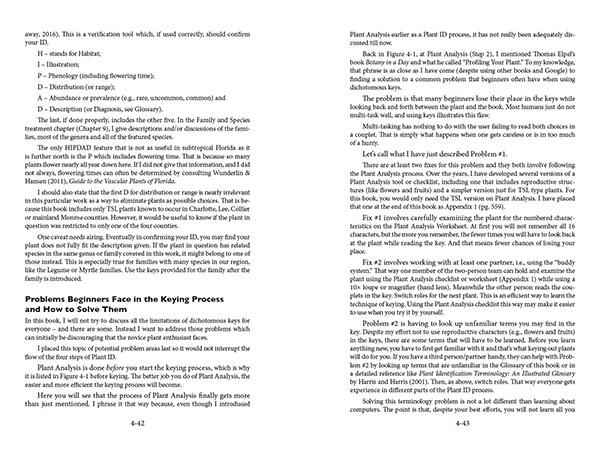
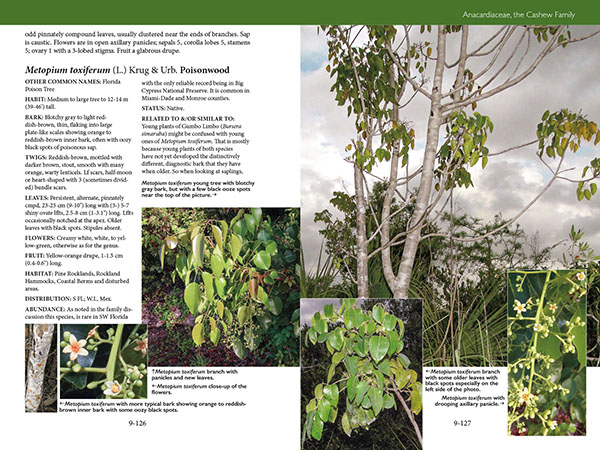

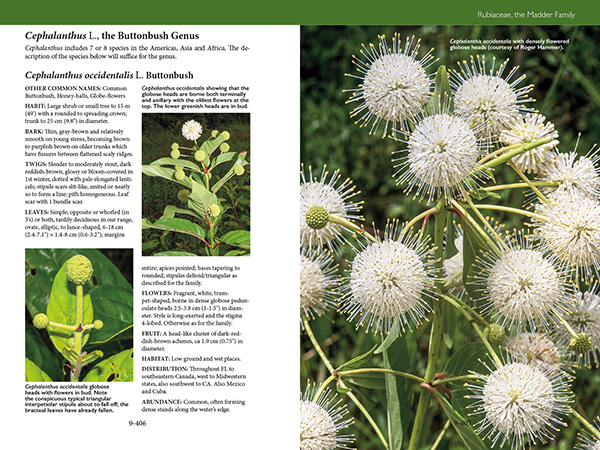
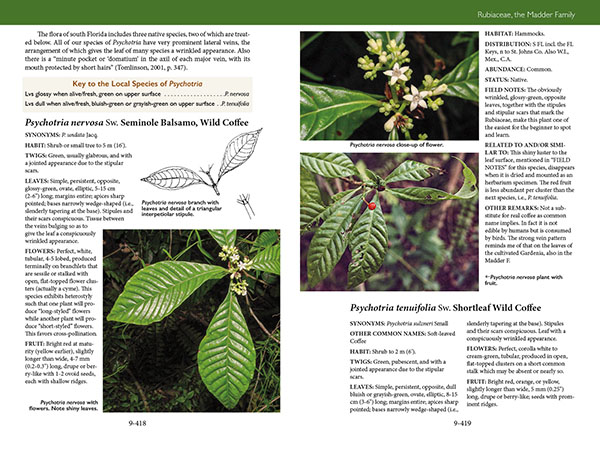
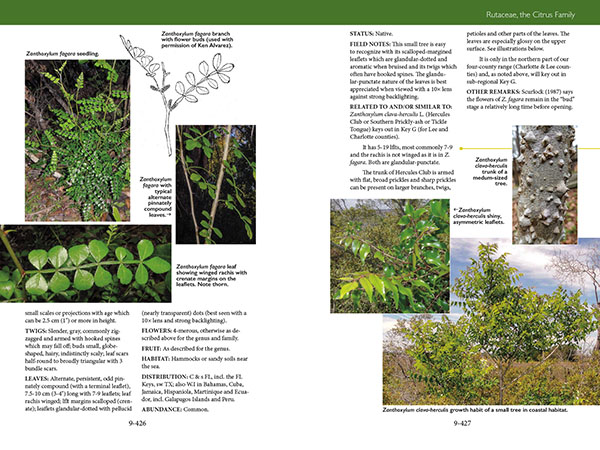
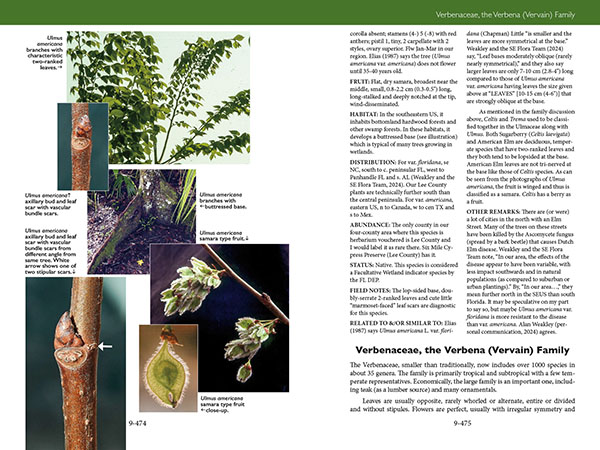
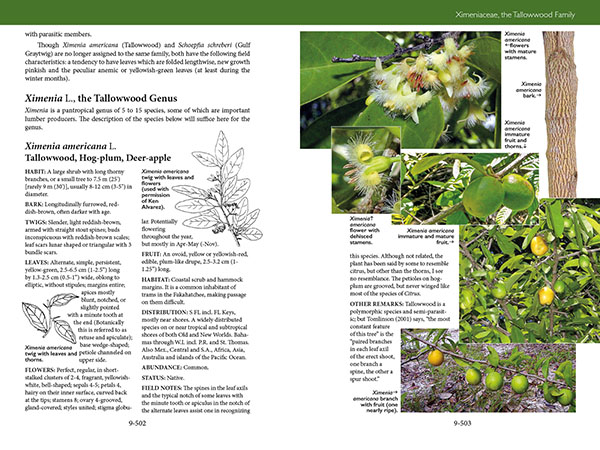
To select from a dropdown list of genera, type only the first 2-3 letters.
If "briar" doesn't deliver the results you want, try an alternate spelling such as "brier", etc.

